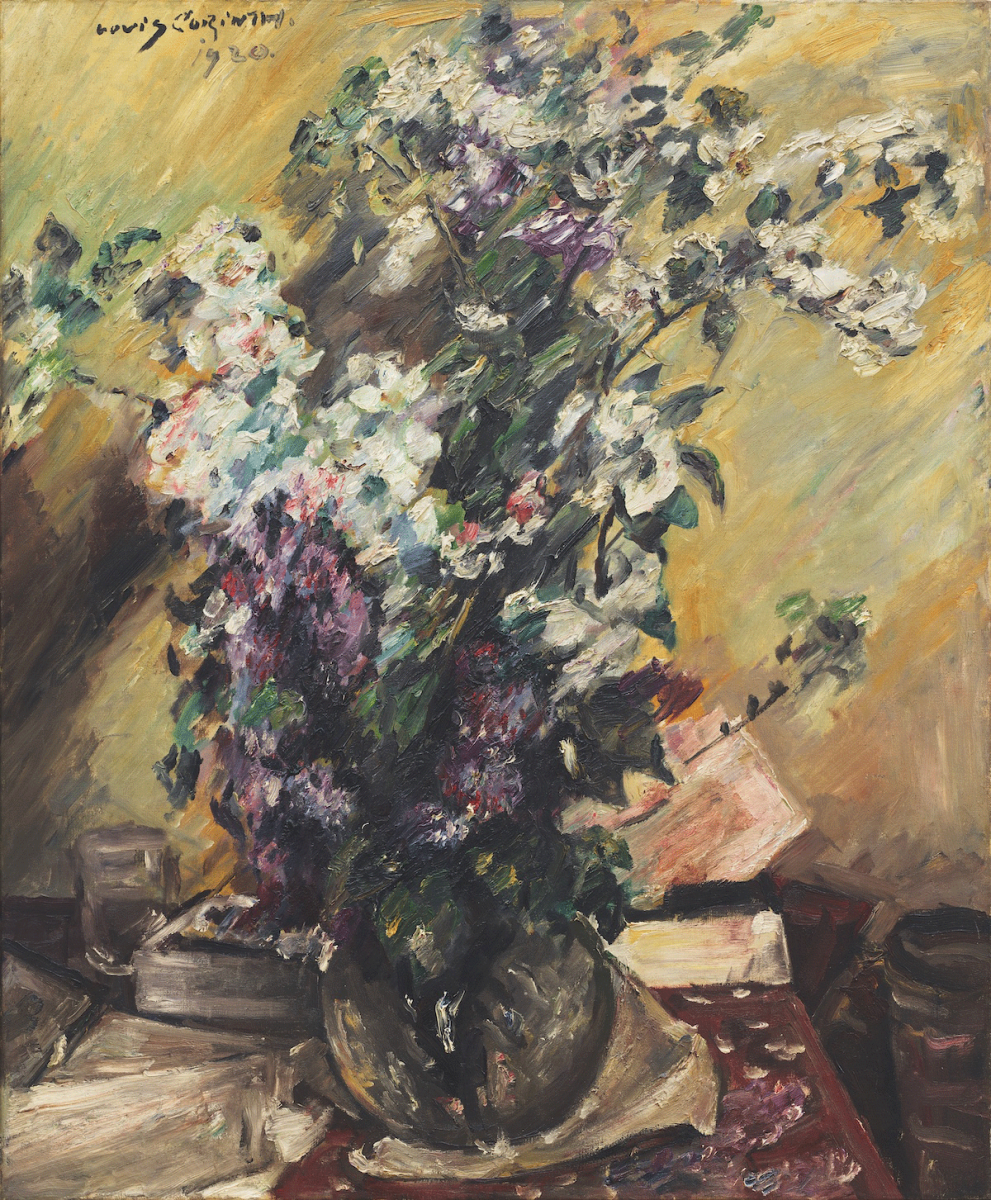Oil on canvas
99.5 × 82.5 cm
Hilti Art Foundation, Schaan
The genre of the still life is associated with the thought that all things earthly are transient, and Corinth's painting Apfelblüten und Flieder (Apple Blossoms and Lilac) is no exception. No matter how exuberant the rendering of the apple and lilac branches, their beauty is inevitably of brief duration. The first petals already lie scattered next to the vase on the table. The elongated branches have been placed in a crystal vase, according to Charlotte Berend-Corinth's brief description in the catalogue raisonné of her husband's paintings, which she wrote and published in 1958. She also mentions the white tissue paper underneath the vase as well as a box of watercolours with paintbrush and a glass of water. In addition, we learn that Corinth painted this still life at Klopstockstrasse in Berlin, where he had been living and working since 1901.
Still lifes, depicting flower arrangements in particular, are the most prolific genre in Corinth's late oeuvre, amounting to more than seventy paintings. They demonstrate the artist's extraordinary mastery and freedom in the treatment of colour. From the very beginning, colour played a crucial role in Corinth's compositions, as also revealed in his history and genre paintings. Apfelblüten und Flieder combines darker hues with a light, Impressionist palette. At the same time, the pigments, applied with great sensitivity and a nervous hand, invest the painting with an air that would seem to show more affinity with Expressionism than with Impressionism.
A stroke in 1911 which paralyzed Corinth's left side, critically undermined his vitality. After physically recovering and returning to his art, Corinth suffered gradual, insidious change described by his wife, in 1920 – the year he painted this picture: "His state of mind was very unsteady. Time and again he was in despair, sensing that he had not achieved what he had set out to do." The slanting, unsteady stroke of the brush and the dissolution of all contours lend the subject matter of Corinth's late work a transience that seems to consume all substance.
Uwe Wieczorek
"True art is practicing unreality."
Lovis Corinth
